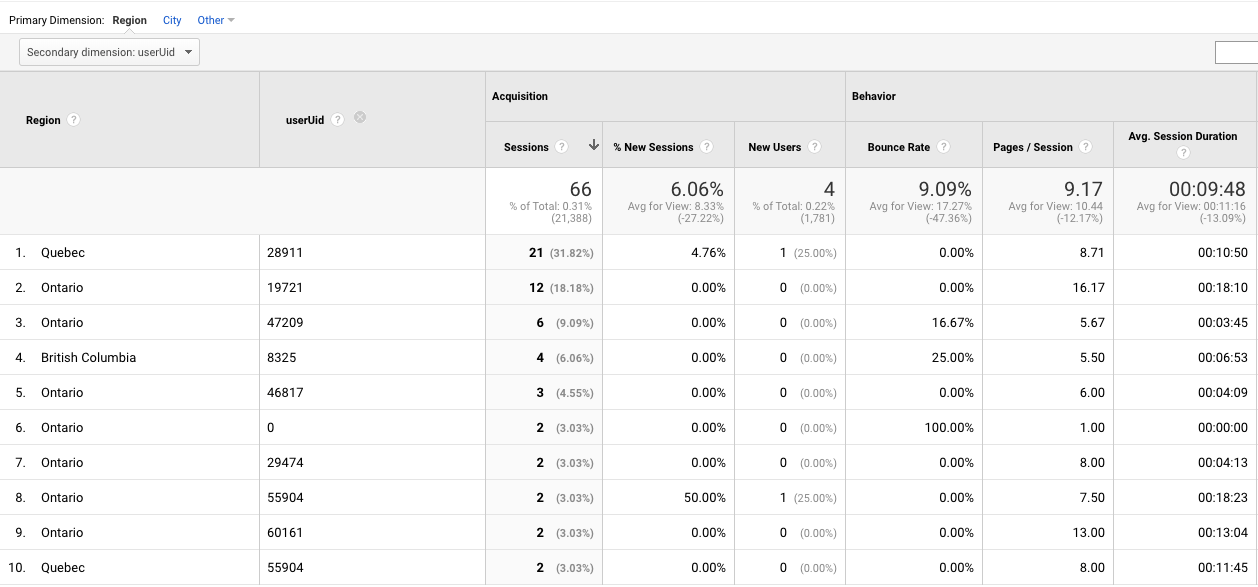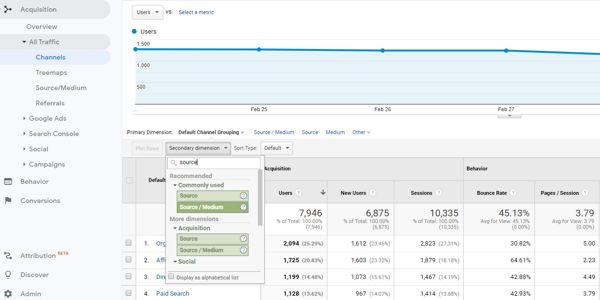Browsing the Midst of Additional Measurement in Google Analytics: An In-depth Exploration on Its Functionality
Secondary dimensions, though relatively straightforward at initial glimpse, harbor a wealth of untapped potential waiting to be taken advantage of. As we begin on this journey to explore the nuanced performance of secondary measurements, we will certainly discover how this attribute can brighten patterns, unveil correlations, and ultimately lead the way for informed decision-making in the digital landscape (what is a “secondary dimension” in google analytics?).
Comprehending Additional Dimensions in Google Analytics

Understanding how additional dimensions job is critical for leveraging the full power of Google Analytics. By combining key metrics with secondary dimensions, you can gain valuable insights that drive informed decision-making and optimization strategies.
Leveraging Additional Measurements for Information Analysis
Structure upon the foundational understanding of exactly how secondary dimensions improve information evaluation in Google Analytics, the utilization of these extra layers of info comes to be critical in drawing out beneficial insights for informed decision-making and optimization strategies. By leveraging second dimensions, experts can delve much deeper right into the efficiency metrics by adding more context to the primary measurements, thus uncovering hidden patterns and relationships that may not be evident at very first glance. This much deeper degree of evaluation allows services to much better understand customer actions, recognize patterns, and pinpoint locations for renovation.
In addition, second measurements supply a more detailed sight of the information, enabling segmentation based on various criteria such as demographics, tools, traffic sources, and more. This division assists in an extra granular evaluation, allowing services to customize their projects and strategies to details audience sections for enhanced targeting and personalization. Fundamentally, the strategic usage of additional measurements encourages organizations to make data-driven choices that drive development and success in the digital landscape.
Advanced Methods for Additional Dimension Execution
Exploring detailed approaches to harness the complete potential of secondary measurements in Google Analytics raises the depth and sophistication of data analysis for calculated decision-making. One innovative technique for applying secondary dimensions is using custom-made measurements. By defining custom-made measurements, individuals can segment information additionally to obtain even more particular understandings into individual habits, such as tracking interactions with certain components on a website or monitoring the efficiency of a specific advertising and marketing campaign. Another sophisticated strategy is the application of regex (routine expressions) within second measurements. Regex allows for even more flexible and effective pattern matching, enabling individuals to produce complicated filters for data evaluation. Additionally, combining secondary dimensions with innovative sectors can provide even extra granular insights by using several layers of segmentation to the information. This method enables for a much deeper understanding of customer habits based on numerous standards at the same time. Carrying out these advanced methods for second measurements in Google Analytics encourages customers to carry out a lot more advanced analysis and make data-driven decisions with precision.
Interpreting Insights Via Additional Measurements

When interpreting insights through second measurements, it is important to take into consideration the context of the information and how different dimensions engage with each other. For instance, understanding which specific web traffic sources lead to greater conversion rates or recognizing which tools customers like for making purchases can offer workable understandings for maximizing advertising and marketing campaigns and boosting general internet site performance. By very carefully analyzing the data with second dimensions in mind, organizations can make educated choices that drive read review meaningful outcomes and boost their digital visibility.
Optimizing Efficiency With Additional Measurements

One crucial way to optimize performance with second measurements is by segmenting information much more granularly. This allows you to isolate details factors that might be affecting your metrics and get a far better understanding of what drives success or failure in your digital efforts. By combining second measurements such as 'gadget category' and 'landing web page,' you can pinpoint which tool types are most reliable for particular landing web pages, enabling you to customize your approaches as necessary.
In addition, making use of secondary measurements can aid you recognize trends, patterns, and correlations that may not be obvious when evaluating information with main measurements alone. This much deeper level of evaluation can result in even more informed decision-making and ultimately boost the general efficiency of your website or electronic marketing campaigns.
Conclusion
To conclude, second dimensions in Google Analytics play an essential role in improving information evaluation and supplying much deeper understandings into web site performance. By making use of innovative methods and interpreting the data efficiently, services can maximize their techniques and enhance general efficiency. Comprehending the capability of second dimensions is essential for making educated choices and driving success in the electronic landscape.
By leveraging second dimensions, analysts can dig deeper into the performance metrics by adding even more context to the main measurements, hence revealing concealed patterns and relationships that may not be evident at initial look. One innovative strategy for executing additional measurements is the usage of personalized dimensions.Having actually grasped innovative strategies like custom-made dimensions and regex for additional measurement execution in Google Analytics, the next essential step is interpreting the valuable insights acquired through these innovative data segmentation techniques. Translating insights through secondary dimensions involves evaluating the relationships between the primary and second measurements chosen, discovering patterns, patterns, and relationships that may not be instantly evident when looking at the information in its totality.When analyzing insights via additional dimensions, it is essential to consider the context of the data and just how various measurements interact with anonymous each other.